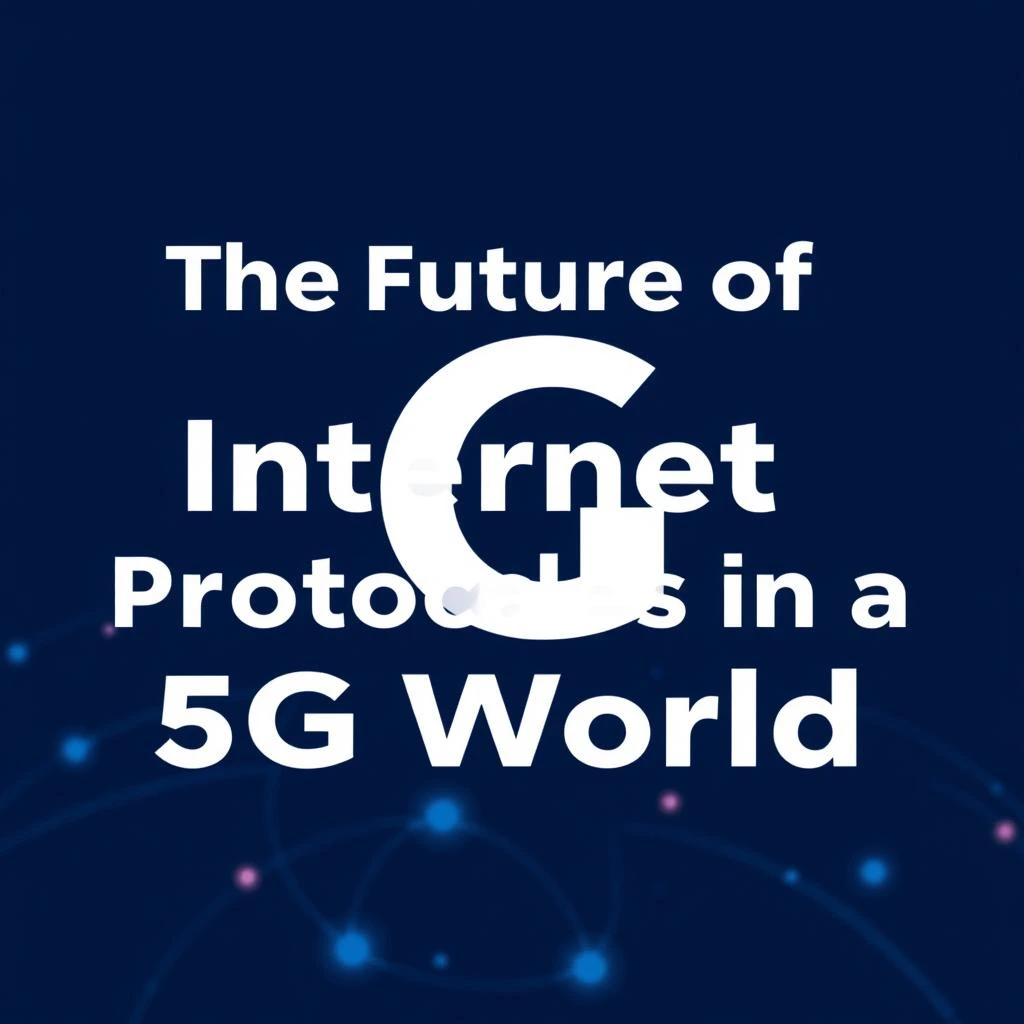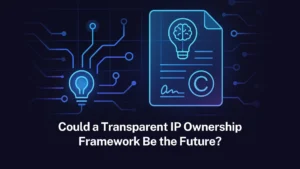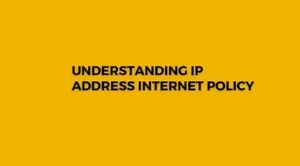The rapid advancement of 5G technology is reshaping how we connect, communicate, and compute. With faster speeds, lower latency, and the capacity to support billions of connected devices, 5G is not just an upgrade—it’s a complete revolution. But with this leap forward in mobile connectivity comes an urgent need to revisit the Internet protocols that form the foundation of global networking.
In this blog, we’ll explore the evolving role of Internet protocols in a 5G-driven world, the limitations of existing systems like IPv4, the growing importance of IPv6, and what the future holds for the Internet’s underlying architecture.
Why Internet Protocols Matter More Than Ever
Internet protocols define how data is transmitted between devices over the network. They ensure that your video calls, social media posts, smart home commands, and cloud-based applications work seamlessly.
In a 5G world, where:
Massive Machine-Type Communication (mMTC) connects billions of IoT devices,
Enhanced Mobile Broadband (eMBB) powers HD streaming and real-time VR,
Ultra-Reliable Low Latency Communication (URLLC) supports autonomous vehicles and industrial automation,
…our traditional networking infrastructure must evolve accordingly.
At the core of this transformation lies the Internet Protocol (IP)—specifically, the transition from IPv4 to IPv6, and the potential for even newer protocols in the years to come.
The Problem with IPv4 in a 5G World
IPv4 was developed in the 1980s and uses a 32-bit address system, supporting approximately 4.3 billion unique IP addresses. That might have seemed like enough back then, but with today’s connected world—and the massive device density expected in 5G environments—it’s far from sufficient.
Here’s why IPv4 can’t support the 5G vision:
Address Exhaustion: We’ve already run out of IPv4 addresses. In a 5G world, billions of devices—from smartphones to sensors—need unique IPs.
Heavy Reliance on NAT: Network Address Translation (NAT) is widely used to stretch IPv4 usage, but it introduces complexity, latency, and compatibility issues.
Limited Mobility Support: IPv4 doesn’t handle mobile IP natively, causing inefficiencies in a mobile-first, wireless world.
IPv6: The Foundation for 5G Connectivity
IPv6 was designed to overcome the limitations of IPv4. It uses 128-bit addresses, offering 340 undecillion unique IPs—enough to assign an IP address to every atom on Earth, and then some.
Key IPv6 Benefits for 5G Networks:
1. Unmatched Address Capacity
IPv6 can assign a globally unique address to every device, from smartphones to autonomous drones, eliminating the need for NAT and enabling seamless end-to-end connectivity.
2. Simplified Network Architecture
With direct addressing, devices can communicate more efficiently. IPv6 reduces the number of network layers, which enhances performance—critical in time-sensitive 5G applications.
3. Built-in Security Features
IPv6 was designed with IPsec as a mandatory feature, providing more secure communication at the network level. As 5G introduces more critical infrastructure into the digital fold, this native encryption becomes essential.
4. Improved Mobility Support
IPv6 supports Mobile IPv6, allowing users and devices to roam across different networks without losing their IP address. This ensures uninterrupted connectivity, a must-have for smart cars and mobile healthcare systems.
5. Scalability for IoT and Edge Computing
5G enables edge computing, and IPv6 supports massive scalability—providing the backbone for edge nodes and IoT sensors to connect and communicate efficiently.
The Role of DNS, HTTP/3, and QUIC in the 5G Era
While IPv6 grabs most of the attention, the future of Internet protocols extends beyond IP addresses. To fully leverage 5G capabilities, other layers of the Internet stack must also evolve.
1. DNS Over HTTPS (DoH) and DNS Over TLS (DoT)
With more data in transit over 5G, privacy and security become paramount. DoH and DoT encrypt DNS queries to prevent third-party tracking, enhancing user privacy—an essential part of a secure 5G ecosystem.
2. HTTP/3 and QUIC Protocol
HTTP/3, built on Google’s QUIC protocol, is designed for speed and performance. It runs over UDP instead of TCP and includes built-in encryption, lower latency, and faster reconnection after signal drops—ideal for 5G applications like online gaming, video conferencing, and real-time analytics.
Challenges to Internet Protocol Modernisation
Despite the urgency, the transition to IPv6 and adoption of new protocols is not without roadblocks:
Legacy Infrastructure: Many networks and devices still operate on IPv4, requiring dual-stack environments during the transition.
Lack of Expertise: Engineers and IT teams must be retrained to handle the nuances of IPv6, QUIC, and modern protocol stacks.
Cost and Complexity: Upgrading network infrastructure involves capital investment, particularly for ISPs, telcos, and data centres.
Vendor Readiness: Not all network hardware or software platforms fully support the latest protocols, creating interoperability issues.
How Telcos and Enterprises Are Embracing the Future
Leading telecommunications providers, cloud platforms, and enterprises are actively upgrading their networks to support 5G-era protocols:
Telcos like Verizon, T-Mobile, and Reliance Jio have already rolled out IPv6 in mobile networks.
Cloud providers like AWS, Google Cloud, and Azure offer IPv6 support for virtual machines, load balancers, and APIs.
Tech giants like Facebook, Netflix, and LinkedIn have adopted HTTP/3 and QUIC to optimise user experiences across mobile and broadband networks.
Their proactive approach sets an example for other organisations looking to stay ahead in a 5G world.
What Comes After IPv6?
While IPv6 is expected to serve the Internet for decades, the pace of innovation may eventually lead to newer protocols tailored for quantum networks, ultra-low latency, or decentralised web infrastructure.
Possible future trends include:
Named Data Networking (NDN): A potential future model where content is addressed by name rather than location, reducing dependency on traditional IP.
Blockchain-based Networking: Secure, decentralised frameworks for managing identity and connectivity.
AI-driven Network Protocols: Protocols that adapt in real-time based on network conditions, device types, or content needs.
Preparing for a Protocol Revolution
The 5G era isn’t just about faster speeds—it’s about reimagining the Internet from the ground up. For that to happen, Internet protocols must evolve to meet the demands of a hyper-connected, low-latency, secure, and scalable world.
IPv6 isn’t just a replacement for IPv4—it’s the digital DNA that will power everything from autonomous vehicles to smart cities. When combined with innovations like HTTP/3, QUIC, and encrypted DNS, it sets the stage for a more robust and responsive Internet.
Organisations that modernise their infrastructure now—by embracing IPv6, updating their DNS policies, and supporting emerging transport protocols—will not only unlock the full potential of 5G but also future-proof their networks for the next wave of innovation.





I just left a page similar to this one, but the material wasn’t as engaging as what’s here.
Whoa! This blog looks just like my old one! It’s on a entirely different topic but it has pretty much the same page layout and design. Superb choice of colors!
Nearly all of the things you point out happens to be supprisingly accurate and that makes me ponder why I hadn’t looked at this with this light previously. This piece truly did turn the light on for me as far as this specific subject matter goes. Nevertheless there is 1 position I am not too cozy with so while I attempt to reconcile that with the main idea of the point, let me observe what the rest of your subscribers have to point out.Very well done.